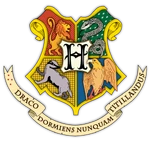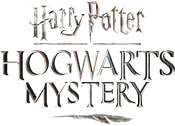
|
Warning!
At least some content in this article is derived from information featured in Harry Potter: Hogwarts Mystery. Spoilers will be present within the article. |

|
"Is this all real? Or has this been happening inside my head?"
The topic of this article is of a real-life subject that has been mentioned "in-universe" in a canon source. The Harry Potter Wiki is written from the perspective that all information presented in canon is true (e.g., Hogwarts really existed), and, as such, details contained in this article may differ from real world facts. |
- "They had to study the night skies through their telescopes every Wednesday at midnight and learn the names of difficult stars and the movement of planets. "
- — Harry Potter's summary of the subject[src]
Astronomy is a core class and subject taught at Hogwarts School of Witchcraft and Wizardry and Uagadou School of Magic. Astronomy is the branch of magic and science that studies stars and the movement of planets.[2] It is a subject where the use of practical magic and spells during lessons is not necessary.
Uagadou students are known to be skilled in Astronomy,[3] implying the teaching that is provided at Uagadou is excellent.
Class information
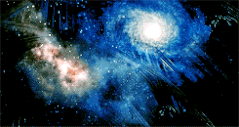
The study of stars
Astronomy lessons are spent learning the names of stars and the movements of planets.[2] It is a required class from year one until year five, and becomes an optional subject for the final two years.
In the fifth year, the Ordinary Wizarding Level examinations are taken. During the exam, students fill in a blank star chart.[4] If a student achieves a passing O.W.L. score, they are allowed to advance to N.E.W.T. level.
Astronomy is one of the only fields of study at Hogwarts which has a direct equivalent in the Muggle world. Known student activities include learning the names of stars, constellations, and planets, as well as their location and movements, and describing the environments of planets and moons.[2]
Wiseacre's Wizarding Equipment in Diagon Alley sells telescopes and other equipment needed for Astronomy.[5] Aurora Sinistra was the Astronomy professor at Hogwarts during Harry Potter's time as a student. She was also teaching during Jacob's sibling's time at Hogwarts, and it became known to them in the 1985–1986 school year.[6]
Location and time
Classrooms

Astronomy Tower, where class is held
Astronomy classes take place in the highest level of the Astronomy Tower, the tallest tower in Hogwarts Castle, and include sky observation sessions with telescopes[2] (each student has to buy one of his/her own).[5]
Lesson times
| Year | Day | Period |
|---|---|---|
| First | Wednesday[2] | midnight[2] |
| Fifth | evening |
Curriculum
First year
During the first year of studies at Hogwarts, students study the night skies through their telescopes every Wednesday at midnight and learn the different names of the stars and the movements of the planets.[2] Toward the end of the year, Hermione was quizzing Ron on Astronomy.[7] Their studying included using a map of Jupiter. It was noted that the studies on Jupiter continued into later years, when Harry tried to learn the names of Jupiter's moons in his fifth year of study at Hogwarts.[4]
Third Year
In the 1993-1994 school year, one of the homework assignments included drawing a star chart which probably means they studied stars that year,[8] and they take a midnight exam at the end of the year.[9]
Fifth year
- "Harry, yours is okay except for this bit at the end, I think you must have misheard Professor Sinistra. Europa's covered in ice, not mice."
- — Hermione Granger during the 1995-1996 school year[src]
The students study Jupiter's moons and write an essay for their homework containing facts such as Europa being covered by ice and Io having many volcanoes.[10] They fill in blank star charts[11] and the homework during this year became intensive enough that some students had to organise a meeting to help each other get through it.[12]
For the Astronomy O.W.L. exam in their fifth year, the written exam contained a section on Jupiter. In 1996, it was held on Wednesday morning. The practical exam took place in the evening at eleven o'clock, and each student had to "fill in a blank star chart" based on a few hours of observing the night sky.[4]
When Harry Potter was taking the Astronomy O.W.L. in 1996, Rubeus Hagrid was confronted by Dolores Umbridge and a team of corrupt Aurors in what was an attempted sacking, which was also the night that Minerva McGonagall took "no less than four Stunners to the chest."[4]
Sixth year
Sixth year students studied constellations, including Cetus, lunar phases,[13] making star charts[14] the Cosmic Ages,[15] Space Weather[16] and Meteor Showers.[17]
Known professors
- Aurora Sinistra (pre. 1985-?)[1][6]
Grades
Passing Grades
|
Fail Grades |
Known O.W.L.s
Behind the scenes
- During the O.W.L. exam, Harry focuses his telescope upon Venus at midnight.[4] However, Venus's orbit is closer to the sun, and when it is midnight at a location, that part of the Earth is approximately facing completely away from the sun. Given these two facts, it is highly unlikely that Harry would have been able to see Venus regardless of Britain's high latitude and the proximity to the summer solstice due to line of sight issues, but the telescope may have been magical.
- In the films, the Astronomy class is never seen or directly mentioned, and Professor Sinistra only appears as an unidentified background extra. However, the Astronomy Tower was shown.
- From the fact that it is common knowledge among wizards that Europa is icy and Io has volcanoes, it seems that, despite the separation of wizarding and Muggle cultures (and the wizarding ignorance of other scientific concepts such as electricity), Muggle science is well-known to wizard astronomers. Just how far wizarding knowledge of modern astronomy goes, though, is unknown. However, it is quite possible that the wizarding world has other means of conducting these studies without the use of Muggle technology since Professor Trelawney possessed a globe of the solar system that accurately depicts all the planets (including Pluto) and their moons. Furthermore, Harry Potter found a moving globe of the galaxy in Diagon Alley when he was staying at the Leaky Cauldron during the summer before his third year. This far surpasses the current state of Muggle knowledge, let alone what it was in the early 1990s.
See also
Appearances
- Harry Potter and the Philosopher's Stone (First appearance)
- Harry Potter and the Chamber of Secrets (Mentioned only)
- Harry Potter and the Prisoner of Azkaban
- Harry Potter and the Prisoner of Azkaban (film) (Mentioned only)
- Harry Potter and the Goblet of Fire (Mentioned only)
- Harry Potter and the Order of the Phoenix
- Harry Potter and the Order of the Phoenix (video game) (Mentioned only)
- Harry Potter and the Half-Blood Prince (Mentioned only)
- Harry Potter and the Half-Blood Prince (film) (Mentioned only)
- LEGO Harry Potter: Building the Magical World (Mentioned only)
- LEGO Harry Potter (Mentioned only)
- Pottermore (Mentioned only)
- Harry Potter: The Creature Vault (Mentioned only)
- Harry Potter: Hogwarts Mystery
Notes and references
- ↑ 1.0 1.1 1.2 Harry Potter and the Chamber of Secrets, Chapter 11 (The Duelling Club)
- ↑ 2.0 2.1 2.2 2.3 2.4 2.5 2.6 2.7 2.8 2.9 Harry Potter and the Philosopher's Stone, Chapter 8 (The Potions Master)
- ↑ Writing by J. K. Rowling: "Uagadou" at Wizarding World
- ↑ 4.0 4.1 4.2 4.3 4.4 Harry Potter and the Order of the Phoenix, Chapter 31 (O.W.L.s)
- ↑ 5.0 5.1 Harry Potter and the Philosopher's Stone, Chapter 5 (Diagon Alley)
- ↑ 6.0 6.1 Harry Potter: Hogwarts Mystery
- ↑ Harry Potter and the Philosopher's Stone, Chapter 15 (The Forbidden Forest)
- ↑ Harry Potter and the Prisoner of Azkaban, Chapter 8 (Flight of the Fat Lady)
- ↑ Harry Potter and the Prisoner of Azkaban, Chapter 16 (Professor Trelawney's Prediction)
- ↑ Harry Potter and the Order of the Phoenix, Chapter 14 (Percy and Padfoot)
- ↑ Harry Potter and the Order of the Phoenix, Chapter 26 (Seen and Unforeseen)
- ↑ Harry Potter and the Order of the Phoenix (video game) - GBA version
- ↑ Harry Potter: Hogwarts Mystery, Year 6, Chapter 25 (Written in the Stars) - Astronomy Lesson "Lunar Phases"
- ↑ Harry Potter: Hogwarts Mystery, Year 6, Chapter 29 (The Whomping Willow Awaits) - Astronomy Lesson "Making Star Charts"
- ↑ Harry Potter: Hogwarts Mystery, Year 6, Chapter 33 (Imitation Game) - Astronomy Lesson "Cosmic Ages"
- ↑ Harry Potter: Hogwarts Mystery, Year 6, Chapter 38 (Meeting the Merqueen) - Astronomy Lesson "Space Weather"
- ↑ Harry Potter: Hogwarts Mystery, Year 6, Chapter 42 (The Final Vault) - Astronomy Lesson (Meteor Showers)
- ↑ 18.0 18.1 18.2 Harry Potter and the Half-Blood Prince, Chapter 5 (An Excess of Phlegm)
| Astronomy | |||||
|---|---|---|---|---|---|
| Professors: Satyavati Shah · Aurora Sinistra | |||||
| Astronomy at Hogwarts: Astronomy classroom · Astronomy Corridor · Astronomy Club · Astronomy department · Astronomy homework meeting · Astronomy reading room · Astronomy Room · Astronomy Stairs · Astronomy Tower | |||||
| Astronomers: Aurora Sinistra · Copernicus · George von Rheticus · Perpetua Fancourt · Hesper Starkey | |||||
| Objects: Astrolabe · Globe of the Moon · Lunascope · Moon chart · Orrery · Sextant · Star chart · Telescope | |||||
| Planets: Jupiter · Mars · Mercury · Neptune · Pluto · Rogue planets · Saturn · Uranus · Venus | |||||
| Satellites: Callisto · Europa · Ganymede · Io · Moon | |||||
| Constellations: Aquila · Bartholomeus · Cetus · Crater · Dark cloud constellations · Orion · Ursa Major | |||||
| Other topics: Black holes · Cosmic ages · Dark energy · Dark matter · Eclipse · Lunar phases · Meteor showers · Space weather · Wormholes | |||||
| Hogwarts subjects | ||
|---|---|---|
| Core classes | Astronomy · Charms · Defence Against the Dark Arts · Herbology · History of Magic · Potions · Transfiguration | |
| Elective classes | Alchemy · Arithmancy · Care of Magical Creatures · Divination · Muggle Studies · Study of Ancient Runes | |
| Extracurricular classes | Apparition · Advanced Arithmancy Studies · Ancient Studies · Art · Flying · Ghoul Studies · Magical Theory · Muggle Art · Muggle Music · Music · Xylomancy · Field Studies | |
| Former classes | Beasts · Dark Arts | |
| Examinations | ||
| First year exams · Second year exams · Third year exams · Fourth year exams · Ordinary Wizarding Level · Nastily Exhausting Wizarding Test | ||

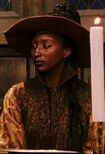
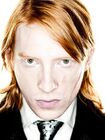
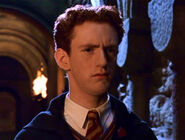
![Hermione Granger Half Blood Prince.jpg (65 KB) Hermione Granger[18]](https://static.wikia.nocookie.net/harrypotter/images/9/94/Hermione_Granger_Half_Blood_Prince.jpg/revision/latest/scale-to-width-down/105?cb=20211007194857)
![HBP promo side Harry cropped.jpg (60 KB) Harry Potter (may not have qualified for N.E.W.T.)[18]](https://static.wikia.nocookie.net/harrypotter/images/9/9f/HBP_promo_side_Harry_cropped.jpg/revision/latest/scale-to-width-down/105?cb=20190125054228)
![Ron Weasley Half Blood Prince.jpg (9 KB) Ron Weasley (may not have qualified for N.E.W.T.)[18]](https://static.wikia.nocookie.net/harrypotter/images/0/01/Ron_Weasley_Half_Blood_Prince.jpg/revision/latest/scale-to-width-down/105?cb=20141122220248)

